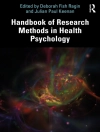Behavioral Neuroscience: Essentials and Beyond shows students the basics of biological psychology using a modern and research-based perspective. With fresh coverage of applied topics and complex phenomena, including social neuroscience and consciousness, author Stéphane Gaskin delivers the most current research and developments surrounding the brain′s functions through student-centered pedagogy. Carefully crafted features introduce students to challenging biological and neuroscience-based concepts through illustrations of real-life application, exploring myths and misconceptions, and addressing students′ assumptions head on.
Jadual kandungan
Preface
Acknowledgments
About the Author
CHAPTER 1. Behavioral Neuroscience: Understanding Brain-Behavior Relationships
Introduction
Module 1.1. What Is Behavioral Neuroscience?
1.1.1 The Study of Brain-Behavior Relationships
1.1.2 A Quick Look at the Brain
1.1.3 Levels of Analysis: Putting Brain-Behavior Relationships in Perspective
1.1.4 A Closer Look at the Molecular Level: Genetics
Module 1.2. The Evolution of Brain-Behavior Relationships
1.2.1 Natural Selection
1.2.2 Neuroecology: How Natural Selection Accounts for Brain-Behavior Relationships
Module 1.3. The Origins of Behavioral Neuroscience
1.3.1 Antiquity
1.3.2 The Mind-Body Problem
1.3.3 Localization of Function
Module 1.4. Studying Brain-Behavior Relationships Today
1.4.1 Brain-Damaged Patients and Structural Brain Imaging
1.4.2 Lesioning, Stimulating, and Measuring the Brain’s Activity
1.4.3 Fields of Study Related to Behavioral Neuroscience
CHAPTER 2. Neurons and Glia
Introduction
Module 2.1. Putting Neurons Into Context
2.1.1 The Place of Neurons Within the Body
2.1.2 Cell Theory and the Neuron Doctrine
2.1.3 Studying Neurons
2.1.4 The Number of Neurons and Glia in the Brain
Module 2.2. The Structure of Neurons
2.2.1 The Prototypical Neuron
2.2.2 The Diversity of Neurons
Module 2.3. The Action Potential
2.3.1 A Little Bit of Chemistry
2.3.2 Initiation of Action Potentials
2.3.3 Propagation of Action Potentials
Module 2.4. Glia
2.4.1 Putting Glia Into Context
2.4.2 The Functions of Glia
CHAPTER 3. The Synapse, Neurotransmitters, Drugs, and Addiction
Introduction
Module 3.1. The Synapse
3.1.1 What Is a Synapse?
3.1.2 What Occurs at a Synapse?
3.1.3 Synaptic Integration
3.1.4 The Varieties of Synapses
Module 3.2. Neurotransmitters
3.2.1 What Are Neurotransmitters?
3.2.2 Neurotransmitter Systems: Pathways, Functions, and Receptors
Module 3.3. Drugs and Drug Addiction
3.3.1 What Is a Drug?
3.3.2 Drug Addiction
3.3.3 Neurobiological Models of Drug Addiction
3.3.4 Mechanisms of Action of Commonly Abused Drugs
CHAPTER 4. The Nervous System
Introduction
Module 4.1. Central Nervous System Development
4.1.1 Gastrulation
4.1.2 Neurulation
4.1.3 Differentiation of the Neural Tube Into the Primary Brain Vesicles
Module 4.2. The Fully Developed Brain
4.2.1 The Structures and Functions of the Forebrain: The Telencephalon
4.2.2 The Structures and Functions of the Forebrain: The Diencephalon
4.2.3 The Midbrain and the Hindbrain
4.2.4 The Spinal Cord
4.2.5 The Protected Brain
4.2.6 Hemispheric Specialization
Module 4.3. The Peripheral Nervous System
4.3.1 The Somatic Nervous System
4.3.2 The Autonomic Nervous System
CHAPTER 5. Neurodevelopment, Neuroplasticity, and Aging
Introduction
Module 5.1. Neurodevelopment
5.1.1 Neurogenesis, Cell Proliferation, Migration, Differentiation, and Synaptogenesis
5.1.2 Adult Neurogenesis
Module 5.2. Neuroplasticity
5.2.1 What Is Neuroplasticity?
5.2.2 Structural Remodeling
5.2.3 Synaptic Plasticity
5.2.4 Cortical Plasticity
5.2.5 When Cortical Plasticity Goes Overboard
Module 5.3. The Aging Brain: Adolescence and Old Age
5.3.1 The Adolescent Brain and Behavior
5.3.2 Normal Aging of the Brain
5.3.3 Disease in the Aging Brain
CHAPTER 6. Sensation and Perception 1: Vision and Hearing
Introduction
Module 6.1. Vision
6.1.1 The Beginnings of an Image
6.1.2 Phototransduction
6.1.3 Acuity and Sensitivity
6.1.4 Receptive Fields
6.1.5 Color Vision
6.1.6 Visual Processing Beyond the Retina
Module 6.2. Hearing
6.2.1 Physical and Perceptual Dimensions of Sound
6.2.2 The Ear
6.2.3 Auditory Processing Beyond the Basilar Membrane
CHAPTER 7. Sensation and Perception 2: Taste, Smell, and Touch
Introduction
Module 7.1. Taste
7.1.1 What Is Taste and What Is It Made Of?
7.1.2 Gustatory Chemoreceptors
7.1.3 Taste Receptor Cells and Their Mechanisms
7.1.4 Taste Perception: Beyond Taste Receptor Cells
Module 7.2. Smell
7.2.1 What Is Smell and What Is It Made Of?
7.2.2 Olfactory Receptor Neurons
7.2.3 Beyond the Olfactory Bulb
7.2.4 Pheromones
Module 7.3. Touch
7.3.1 What Is Touch and What Is It Made Of?
7.3.2 Mechanoreceptors
7.3.3 Conduction and Mechanoreceptors
7.3.4 Beyond Mechanoreceptors
7.3.5 Pain
CHAPTER 8. Sensorimotor Systems
Introduction
Module 8.1. This Is What Makes You Move
8.1.1 Muscles and Muscle Contraction
8.1.2 Innervation of Muscle Cells
8.1.3 How Muscles Contract
Module 8.2. Spinal Control of Movement
8.2.1 Spinal Reflexes
8.2.2 Motor Programs
Module 8.3. Cortical Control of Movement and Sensorimotor Integration
8.3.1 Proprioception
8.3.2 The Descending Pathways
8.3.3 Anatomy of Voluntary Movement
8.3.4 Putting It All Together
CHAPTER 9. Motivation: Theories, Temperature Regulation, Energy Balance, and Sleep
Introduction
Module 9.1. Theories of Motivation
9.1.1 What Is Motivation?
9.1.2 Need Reduction Theory
9.1.3 Arousal Theory
9.1.4 Pleasure Seeking and Reward
Module 9.2. Physiological Mechanisms
9.2.1 Temperature Regulation
9.2.2 Energy Balance, Hunger, and Eating
Module 9.3. Regulation of Sleep and Wakefulness
9.3.1 What Is Sleep?
9.3.2 Homeostatic and Circadian Influences on Sleep and Wakefulness
9.3.3 The Neurochemistry and Physiology of Wakefulness and Sleep
CHAPTER 10. Hormones: Social and Reproductive Behavior
Introduction
Module 10.1. What Are Hormones?
10.1.1 Hormones and Their Discovery
10.1.2 Types of Hormones and the Roles of the Hypothalamus and Pituitary
10.1.3 Steroid and Nonsteroid Hormones
10.1.4 The Actions of Specific Pituitary Hormones
Module 10.2. Hormones and Behavior
10.2.1 Social Behavior
10.2.2 Sexual and Reproductive Behavior
Module 10.3. Organizing Effects of Hormones and Sexual Orientation
10.3.1 The Organizing Effects of Hormones
10.3.2 Sexual Orientation
CHAPTER 11. Emotions
Introduction
Module 11.1. What Are Emotions?
11.1.1 Emotions, Emotional Experience, and Emotional Expression
11.1.2 Theories of Emotions
Module 11.2. Emotions: Where in the Brain?
11.2.1 Emotional Networks in the Brain
11.2.2 Emotions and the Amygdala
11.2.3 Emotions and the Amygdala in Humans
Module 11.3. Emotions and Decision Making: Beyond the Amygdala
11.3.1 The Prefrontal Cortex
11.3.2 The Somatic-Marker Hypothesis
Module 11.4. Aggression
11.4.1 What Is Aggression?
11.4.2 Aggression in the Brain
11.4.3 Aggression: Testosterone, Cortisol, and Serotonin
CHAPTER 12. Memory and Memory Systems
Introduction
Module 12.1. Memory and Memory Systems
12.1.1 What Is Memory?
12.1.2 The Stages of Memory
12.1.3 The Registers of Memory
12.1.4 Working Memory and the Brain
Module 12.2. Long-Term Memory
12.2.1 What Is Long-Term Memory?
12.2.2 The Neuroanatomy of Long-Term Memory
Module 12.3. Memory Consolidation
12.3.1 What Is Memory Consolidation?
12.3.2 Theories of Memory Consolidation
Module 12.4. Navigating Through Space: Spatial Memory
12.4.1 What Is Spatial Memory? The Hippocampus as a Navigational Device
12.4.2 Cells for Space: An Internal GPS
12.4.3 The Hippocampus and Nonspatial Memory
Module 12.5. Learning: The Acquisition of Memories
12.5.1 What Is Learning?
12.5.2 Nonassociative Learning
12.5.3 Associative Learning
12.5.4 Synaptic Plasticity: Neurons That Wire Together Fire Together
CHAPTER 13. Attention and Consciousness
Introduction
Module 13.1. Attention
13.1.1 What Is Attention?
13.1.2 Concepts in the Study of Attention
13.1.3 Attention: Where in the Brain?
13.1.4 Disorders of Attention
Module 13.2. Consciousness
13.2.1 What Is Consciousness?
13.2.2 The Problems of Consciousness
13.2.3 The Neural Correlates and Contents of Consciousness
13.2.4 A Neurobiological Theory of Consciousness
13.2.5 Disorders of Consciousness
13.2.6 Hidden Consciousness
13.2.7 Free Will
CHAPTER 14. Psychological Disorders
Introduction
Module 14.1. What Is a Psychological Disorder?
14.1.1 Defining Psychological Disorder
14.1.2 The Interacting Factors Behind Psychological Disorders
Module 14.2. Anxiety Disorders and Posttraumatic Stress Disorder
14.2.1 Anxiety, Fear, and Anxiety Disorders
14.2.2 The Neurobiology of Anxiety Disorders
14.2.3 Posttraumatic Stress Disorder
14.2.4 The Neurobiology of Posttraumatic Stress Disorder
Module 14.3. Obsessive-Compulsive Disorder
14.3.1 What Is Obsessive-Compulsive Disorder?
14.3.2 The Neurobiology of Obsessive- Compulsive Disorder
Module 14.4. Major Depressive Disorder
14.4.1 What Is Major Depressive Disorder?
14.4.2 The Neurobiology of Major Depressive Disorder
Module 14.5. Schizophrenia
14.5.1 What Is Schizophrenia?
14.5.2 The Neurobiology of Schizophrenia
CHAPTER 15. Social Neuroscience
Introduction
Module 15.1. What Is Social Neuroscience?
15.1.1 Social Neuroscience: The Chicken or the Egg?
15.1.2 The Social-Neuroscientific Perspective
Module 15.2. Self-Awareness
15.2.1 What Is Self-Awareness?
15.2.2 Self-Awareness: Where in the Brain?
Module 15.3. Theory of Mind and Empathy
15.3.1 What Is Theory of Mind?
15.3.2 Theory of Mind: Where in the Brain?
15.3.3 Empathy
Module 15.4. Social Pain
15.4.1 Two Dimensions of Physical Pain
15.4.2 Social Pain: Does It Really Hurt?
Module 15.5. Altruism
15.5.1 What Is Altruism?
15.5.2 Altruism: Where in the Brain?
Module 15.6. Cooperation and Trust
15.6.1 Game Theory
15.6.2 Game Theory and the Brain?
Glossary
References
Author Index
Subject Index
Mengenai Pengarang
Stephane Gaskin is a psychology professor at Dawson College in Montréal. He is also a lecturer at Concordia and Mc Gill universities. Over the course of over 15 years, Stephane has taught a variety of psychology courses at both college and university. He has taught the very first brain and behavior course officially offered at Dawson College and regularly teaches behavioral neuroscience at university. Stephane obtained both his Bachelor and Master of psychology degrees at Concordia University. For his master′s degree, which was also completed at Concordia, Stephane′s research focused on the role of the hippocampus in spatial and object-recognition memory. He then pursued and obtained a Ph D degree at Mc Gill University where he studied the interaction between various brain areas such as the hippocampus amygdala and striatum in learning to approach cues associated with appetitive stimuli. Stephane then pursued his studies as a postdoctoral researcher at both the University of California in San Diego and Concordia University in Montréal. Much of Stephane′s research was published in international scientific journals and presented at the Society for Neuroscience′s annual conferences.












